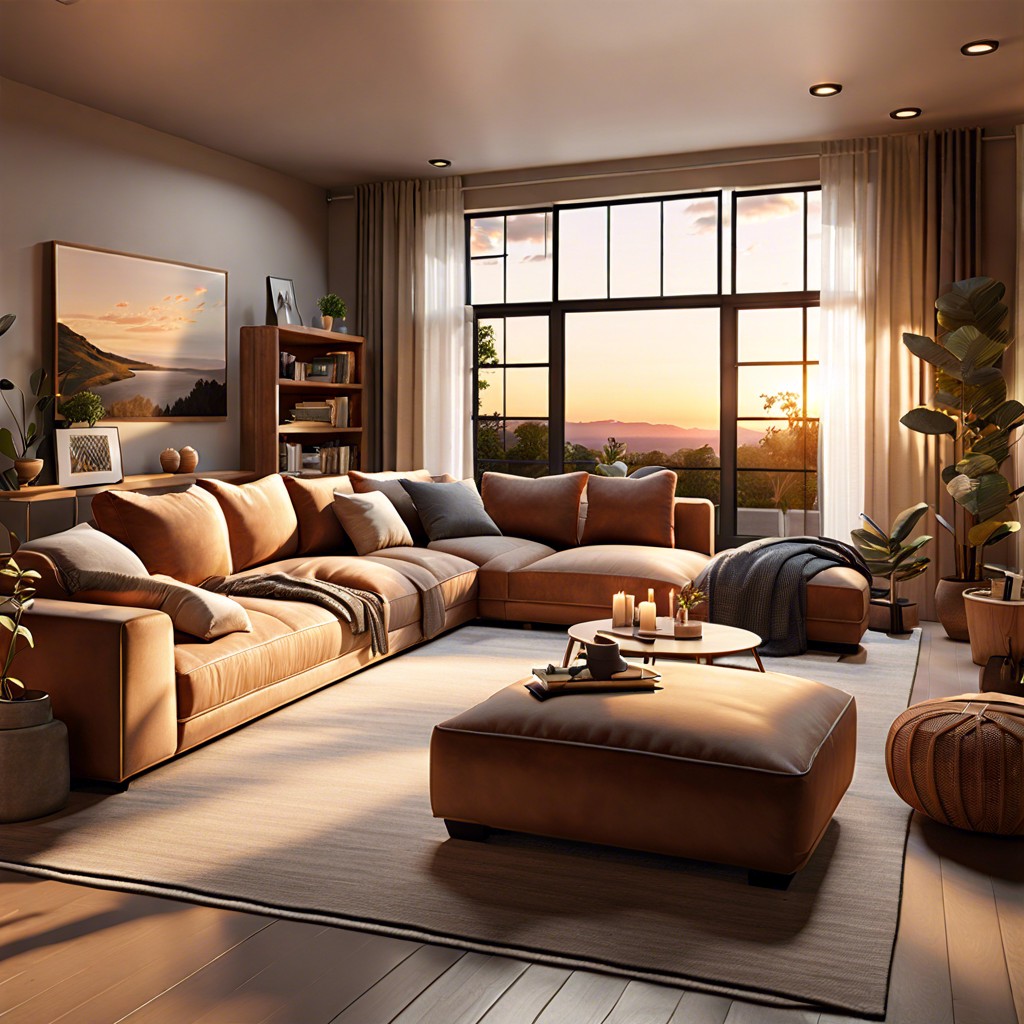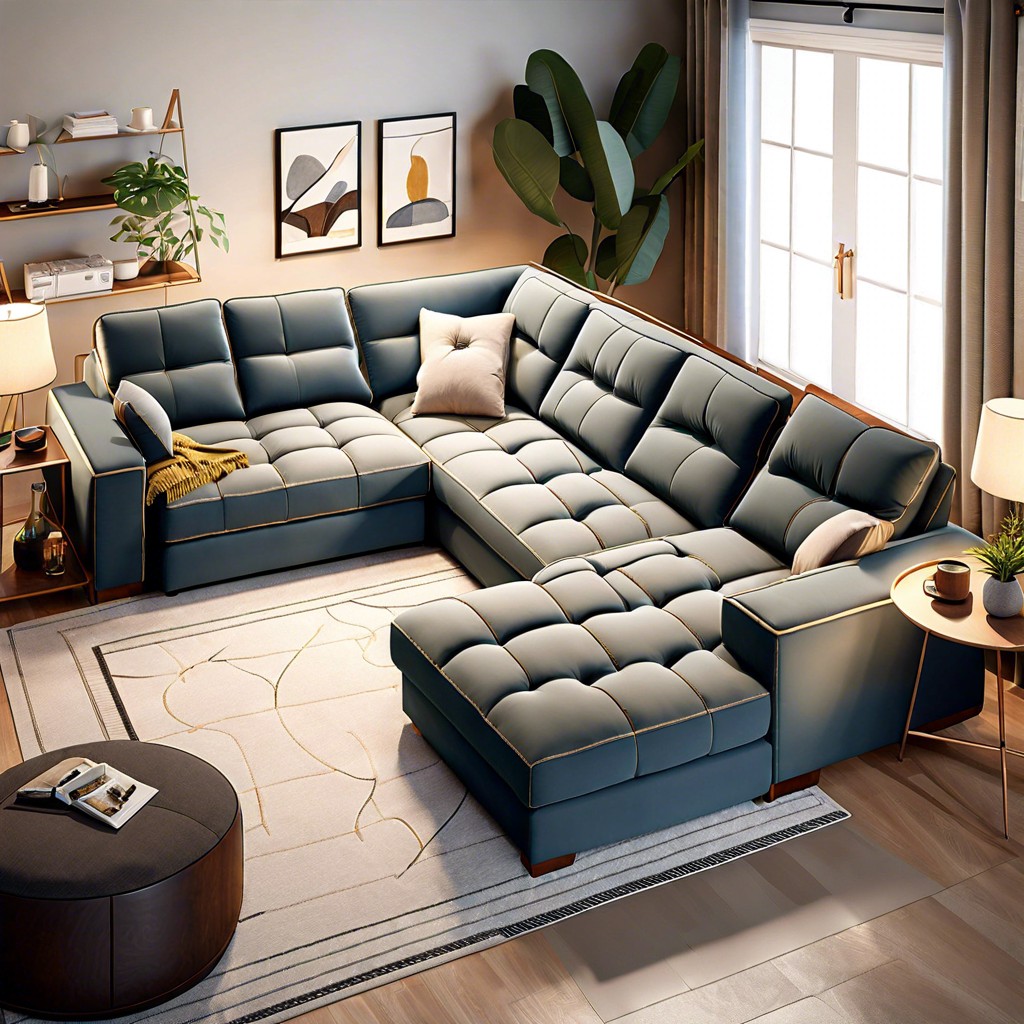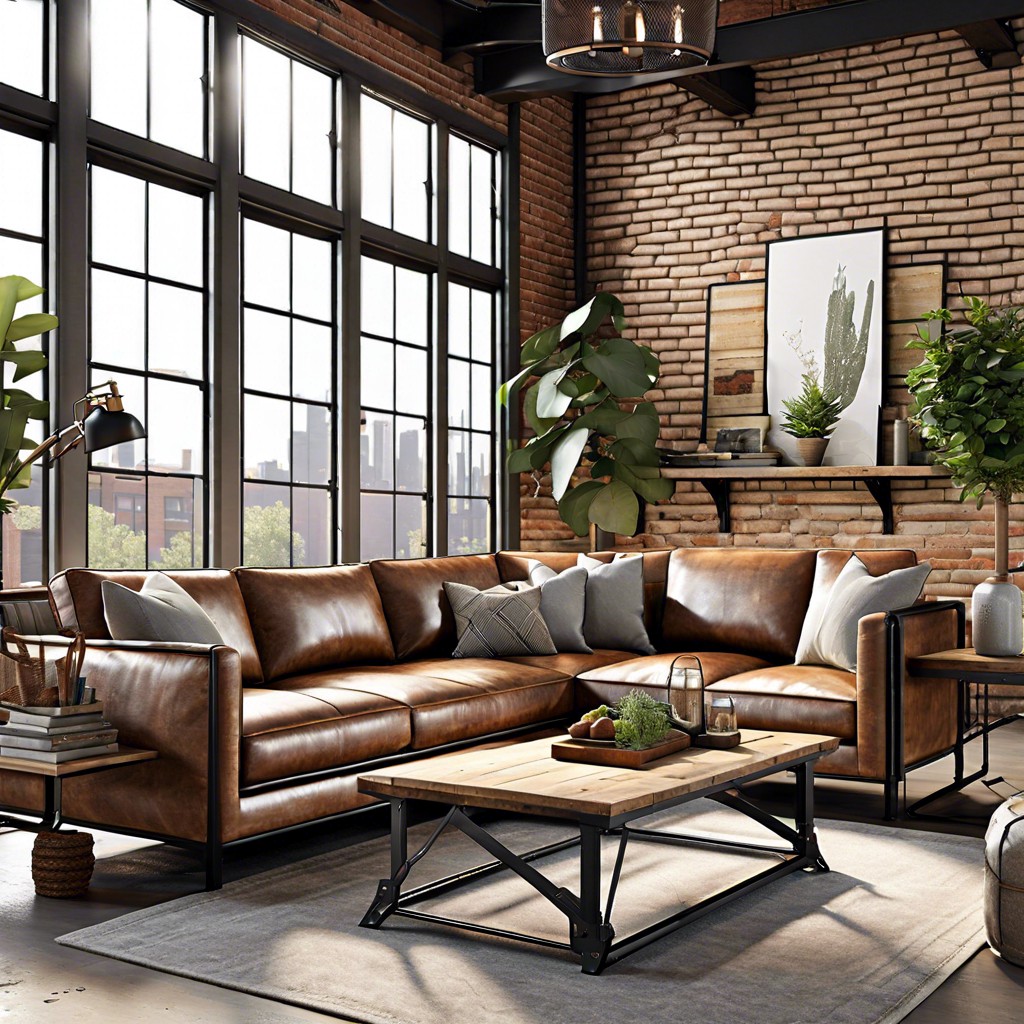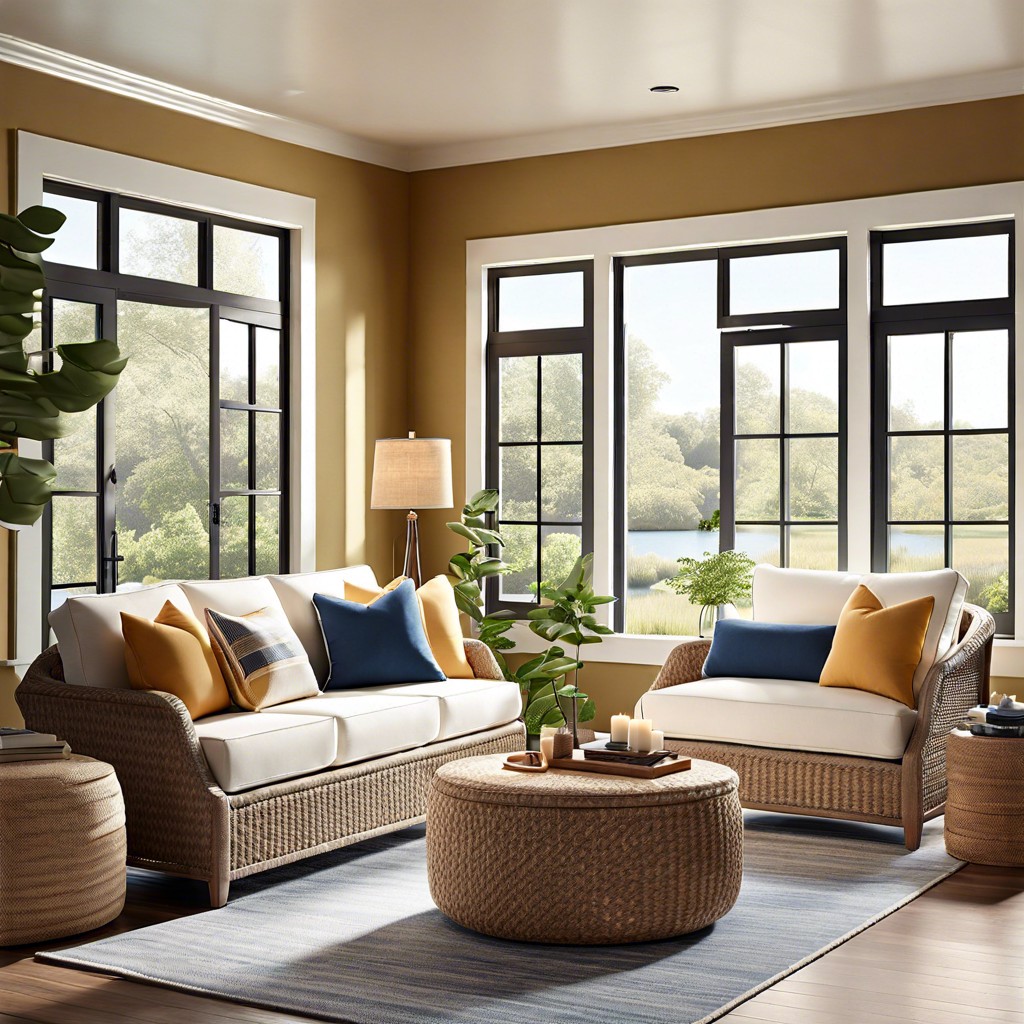Last updated on
Selecting the right color for your couch depends on various factors; this article will provide practical guidelines to help you make the best choice for your living space.
Key takeaways:
- Couch color should complement the function of the room.
- Consider the wall color to achieve a harmonious look.
- Maintenance and lifestyle should influence color choice.
- Color psychology impacts mood and atmosphere.
- Neutral sofas offer versatility and practicality.
Table of Contents
Assessing Room Function and Use

The function of your living space significantly influences your couch color choice. For a room frequently used for entertaining guests, vibrant or unique-colored couches can make a statement and stimulate conversation. However, in a family room where relaxation is paramount, softer, soothing colors enhance a sense of calm and comfort.
If your space doubles as a home office, a darker or neutral-toned sofa can convey professionalism and help hide wear and tear. In contrast, light-colored sofas often work well in formal living rooms that are used less often, reducing the risk of stains and keeping the space feeling airy and bright.
It’s also important to consider the layout of your room. In small spaces, lighter couches can make the room feel more open and spacious, while dark sofas can bring a sense of coziness to larger rooms. No matter the room’s purpose, ensure your couch color choice complements its function to create a harmonious living environment.
Coordinating With Wall Color
When you select a couch color, consider the wall color to achieve harmony in your space. For light or neutral walls, a bold couch can serve as a focal point. Conversely, if your walls have a darker hue, a lighter sofa can bring balance and prevent the room from feeling too heavy.
Complementary colors create a dynamic contrast. For instance, a blue couch against a pale orange wall can provide a vibrant yet sophisticated aesthetic. Alternatively, analogous colors, such as a green couch against a blue wall, offer a serene and cohesive look.
For patterned or textured walls, choose a sofa with a solid color to avoid visual clutter. In rooms with wallpaper or elaborate wall art, a simpler couch allows intricate designs to stand out without competing for attention.
Ultimately, your goal is to establish a pleasing visual flow. Test color swatches in your room’s lighting to ensure the hues will complement each other in the varying light throughout the day.
Considering Maintenance and Lifestyle
When selecting a couch color, factor in your daily routine. Light-colored fabrics may show stains and wear more quickly, which can be problematic in homes with young children, pets, or frequent hosting. Darker hues tend to hide dirt and spills better, offering low-maintenance upkeep.
Material choice also plays a role in maintenance. Leather, for instance, can be wiped clean but may necessitate regular conditioning. In contrast, microfiber is plush and easier to maintain but may not offer the same luxe feel.
Reflect on your lifestyle to determine the best fit. A vibrant color might invigorate a space used for entertainment, while a softer tone suits relaxation-focused areas. Strike a balance between personal taste and practicality to ensure your couch stands the test of time in both style and durability.
Understanding the Impact of Color Psychology
Color psychology plays a pivotal role in influencing emotions and behaviors. A couch’s color can dramatically alter the ambience of a space. Bright colors, such as yellows or oranges, are known for boosting energy and fostering lively conversations, making them ideal for entertaining areas. Conversely, cooler hues like blues and greens instill tranquility and are well-suited for spaces dedicated to relaxation or reflection.
For those aiming for a sophisticated and elegant touch, darker shades such as navy or charcoal can serve this purpose excellently. They often anchor a room and give a sense of depth. Lighter colors, on the other hand, make rooms appear more spacious and airy, with beige and light grey promoting a feeling of calmness and flexibility in decor.
It’s important to recognize the emotional impact of the color you choose because the couch will likely be a centerpiece in the room. A color that clashes with your intended emotional environment can create a sense of discomfort or unease. Hence, when selecting your couch color, envision the mood and atmosphere you want to promote within the space.
When to Choose a Neutral Color Sofa
Opting for a neutral color sofa can be a strategic decision, especially in certain scenarios. If your living space doubles as a high-traffic area, a neutral couch can hide minor stains and withstand the test of time. Operating as a versatile backdrop, it allows for easy redecorations without clashing with new color schemes or patterns introduced through accessories like throw pillows and blankets.
Those who enjoy regularly refreshing their decor may also find a neutral sofa beneficial, as it seamlessly adapts to seasonal changes or trending colors. Additionally, in smaller spaces, lighter neutrals can create an illusion of more room, enhancing the openness and airiness of the area.
For households with pets or young children, a neutral sofa with a washable slipcover might offer practicality and peace of mind. It’s not just about matching the decor but also ensuring that the furniture caters to the dynamics of daily life.
Above all, remember that a neutral sofa doesn’t have to be mundane. Textures and shapes play a significant role in elevating its appearance, making the couch a statement piece in its own subtle way.




